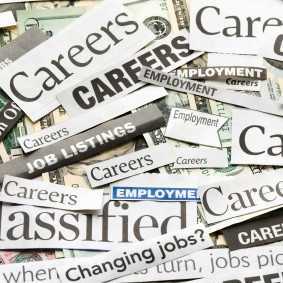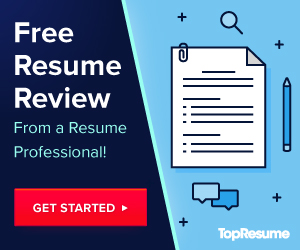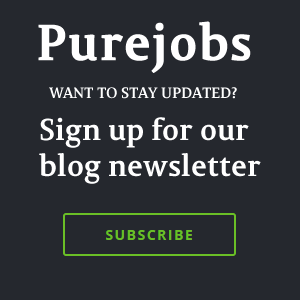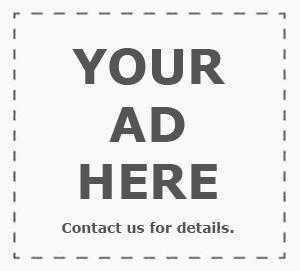“Fast Track Hiring” has emerged as a major trend. There are organizations that are making hiring decisions within days instead of weeks, within hours instead of days. For job seekers this means that preparation and strategies must include a “quick response” capability. At times, certainly in the pre-technology world of mostly paper and mailed applications/responses, it was OK to submit an application, mail a resume, and wait. Wait for a response that might never come – and maybe after a week or so follow up. Or send a thank you note a few days after an interview.
Not today! If you have an interview, make sure you have the e-mail addresses of everyone you spoke with. Follow up on the same day with that thank you e-mail and that additional information about your accomplishments. Based on the results of that interview, review your LinkedIn profile and tweak the information. It’s almost a certainty that a potential employer will be checking your social media information. Make sure references you’ve provided are not just willing to provide references but ready. Contact them immediately with information you’ve gained from your interview.
Get a free CV REview before applying for your next job applications
Unique Resume Formats
Unique resume formats are nothing new. But technology has created some new options. “Visual” resumes, “Infographic” resumes, and even YouTube resumes are examples. I think the emergence of these options is great as they add new options for effectively presenting a job seeker’s accomplishments and experiences. But the best thing about the existence of these new options is that technology today makes it possible for a job seeker to easily have multiple versions of a resume. Here’s why this is important.
Years ago, I presented a session on resumes for a college student job fair. A student approached with a resume that was divided into four quadrants with quarter inch bright red lines – and the student’s picture right in the center of the page. I thought his resume was a very “risky” format. He strongly disagreed, arguing his creativity would “stand out.” I challenged him to show his resume to as many of the HR representatives as possible and report back to me. He did and reported that 50% of the professionals he talked to “liked it.” When I asked about the other 50%, he admitted that they not only didn’t like but would likely reject him as a candidate because of it.
And this is the problem. No job seeker can afford to turn off their candidacy because of a “risky” format. There are certainly some situations, in the creative arts for example, where demonstrating creativity on a resume is relevant. At the same time, the solution with today’s technology is easy – create multiple versions of your resume. Develop a “Visual” resume if you think it’s appropriate for your target audience. But make sure you have a more “standard” resume prepared as well.
Why Can’t We Get Over Skills?
If there’s one thing that needs “tossing” in the spirit of “spring cleaning,” it’s the overwhelming dominance of “skills” on resumes. I’ve seen too many (almost all) resumes that contain lists of skills – sometimes 20 or 25 different skills. One of my professional colleagues described this situation best when I asked her to review a resume I’d received.
The resume is designed to GET YOU THE INTERVIEW, NOT describe everything plus the kitchen sink. It’s like throwing darts in the dark and hoping you will hit someone.
The real problem with “skills” is that they really don’t say much. They describe what you “have,” not what you’ve “done.” I have a definite skill with hammer and nails. But I have done little more than hang a dozens of pictures, assembled and repaired some household furniture. I’m not even a good volunteer for “Habitat for Humanity.” This skill has nothing to do with my strengths or my accomplishments.
Listing skills is often confusing. What does it mean if you’re a “great communicator” or a “great problem solver?” In addition, listing 20-25 skills, emphasizing a dozen of them in a summary, may be perceived by a recruiter or HR professional as a “Superman” or “Wonder Woman” resume..
The “Endorsements” category on your LinkedIn profile, if you develop it properly, is dramatically different in two ways. First, these are skills identified by your connections. It is someone else saying you are good at something. Second, these endorsements are ranked by number of connections selecting them – not that all-encompassing list. I have a colleague who has been endorsed for over 30 skills. He has 99+ (the most that LinkedIn shows) endorsements for “public speaking” and 95 for “strategic planning.” He has one for “policy analysis” and one for “integrated marketing.” If I look at that list of 30 skills I get a clear profile on what his connections, clients and colleagues, see as his skills. That’s meaningful.
Your resume and LinkedIn profile should contain specific accomplishment with measurable results whenever possible – and that should almost always be possible. In each of those accomplishment statements, you can identify the specific skills used. Bottom line: Get rid of that list of skills!
Spring cleaning doesn’t stop with just one or two rooms. There are some other parts of the job search that need some review, coming in Part II.

About the author
Jim Schreier is a management consultant with a focus on management, leadership, including performance-based hiring and interviewing skills. Visit his website at www.farcliffs.com and www.212-careers.com..
Photo Credit: Shutterstock












